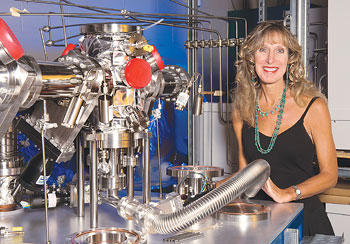INDIAN ARMED FORCES CHIEFS ON OUR RELENTLESS AND FOCUSED PUBLISHING EFFORTS

The insightful articles, inspiring narrations and analytical perspectives presented by the Editorial Team, establish an alluring connect with the reader. My compliments and best wishes to SP Guide Publications.

"Over the past 60 years, the growth of SP Guide Publications has mirrored the rising stature of Indian Navy. Its well-researched and informative magazines on Defence and Aerospace sector have served to shape an educated opinion of our military personnel, policy makers and the public alike. I wish SP's Publication team continued success, fair winds and following seas in all future endeavour!"

Since, its inception in 1964, SP Guide Publications has consistently demonstrated commitment to high-quality journalism in the aerospace and defence sectors, earning a well-deserved reputation as Asia's largest media house in this domain. I wish SP Guide Publications continued success in its pursuit of excellence.
- Indian Air Force Aims for Full Indigenous Inventory by 2047 — Air Chief Marshal A.P. Singh
- General Upendra Dwivedi takes over as the Chief of the Army Staff
- Rajnath Singh assumes charge as Defence Minister for the second consecutive term
- Admiral Dinesh K. Tripathi assumes Command of the Indian Navy as 26th Chief of the Naval Staff
- Prime Minister witnesses 'Bharat Shakti' – a Tri-Services Firing and Manoeuvre Exercise in Pokhran, Rajasthan
Next-gen on-the-move communications systems

The US Army Research Laboratory’s (ARL) Weapons and Materials Research Directorate, Integrated Electromagnetic Materials Research team was recently recognised with a 2012 Army Research and Development Achievement Award for their technology titled, “A Materials Physics Innovation to Achieve Enhanced and Balanced Material Properties to Enable the Armys Next Generation On-The-Move (OTM) Communications Systems.”
The team, led by Melanie Will-Cole, included Samuel (Gary) Hirsch, Clifford Hubbard, Matthew Ivill, Eric Ngo and Ryan Toonen.
“Each member of the team provided an equally significant contribution for this Materials Physics Innovation; our teams research expertise is complimentary to one another, and in this case, the sum of the parts makes the whole,” Cole said.
The technology for which Cole and her research team have been recognised is focused on developing complex oxide thin film materials to enable tunable RF/microwave devices for next generation mobile electrically scanned antennas (ESAs).
Cole explained a major “show-stopper” impeding the development of complex oxide-based tunable phase shifters for ESAs is centred on the simultaneous minimisation of the films dielectric loss (minimisation of signal attenuation) in conjunction with maximisation of films dielectric tunability (maximisation of phase shift).
Cole said this is a difficult challenge to overcome as these two properties are tightly coupled and negatively opposed to one another. By developing a fundamental understanding of the loss mechanisms inherent to these complex oxide materials, namely charged defects/oxygen vacancies, the team was able to develop an effective strategy using ultraviolet-photon irradiation to mitigate these defects, hence reduce dielectric loss without degrading the dielectric tunability.
Cole stated that this RDA award research was actually an extension of an ARL Directors Research Initiative award, which she and her group received a few years ago. After completing the DRI effort, the team continued to think about the problems this technology had and they began unraveling the materials physics responsible for both the intrinsic and extrinsic material loss mechanisms. “You could say that the DRI served as the root system, which spawned this RDA award,” Cole said.
Describing how this technology will impact the warfighter, Cole said, “This innovation established the scientific foundation, which will help realise affordable, high data rate, beyond line of sight for the Armys next generation on-the-move electronic scanning antennas.”
According to Cole, collaboration was a driving force for the team.
“Winning this award means a lot to our research team,” Cole said. “It is our teams collaborative nature, in which we work together sharing knowledge, expertise and skills with one another, which has enabled this RDA award. Collaborative research behavior is not only critical, but is the vital ingredient for attaining successful and innovative science necessary to realise future army communications systems.”
Cole and her research team have previously been recognised for research that will utilise enhanced performance tunable devices, which are critical components for the armys next generation of communications systems.





